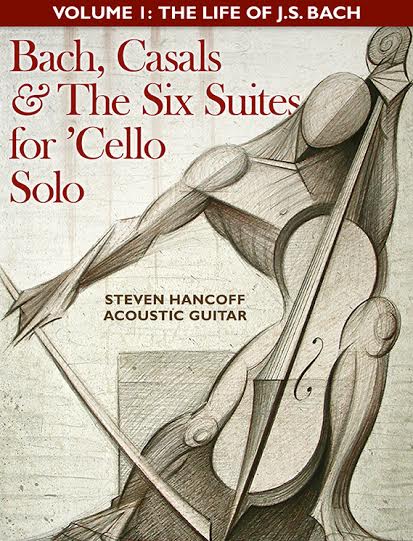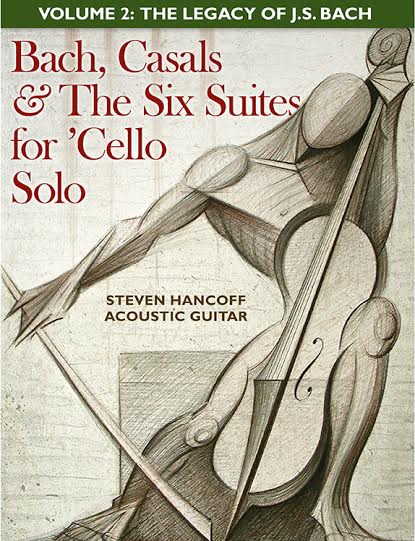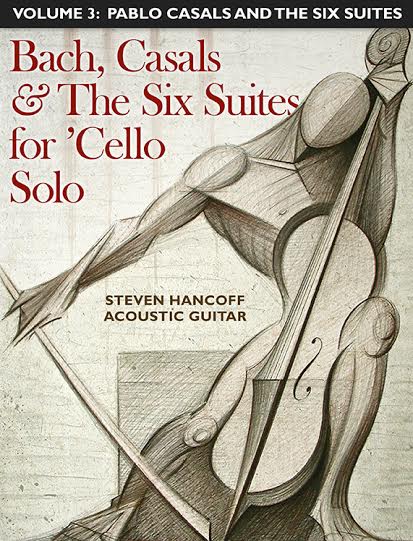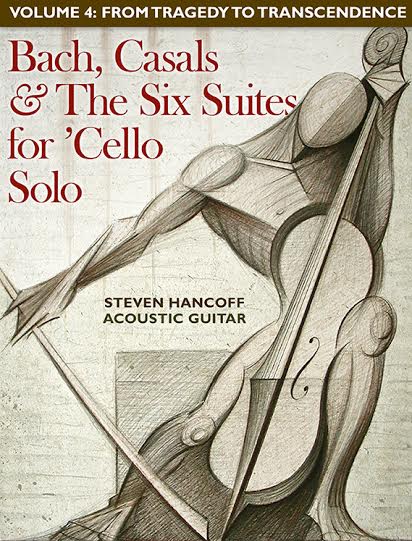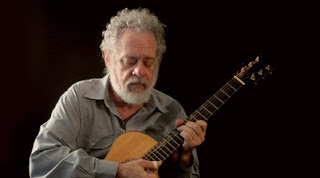|
|
|
|
|
|
Category: Adult non-fiction, 1189 pages
Genre: Biography / Music
Publisher: iTunes
Release date: June 2015
Tour dates: Nov 30 – Dec 18, 2015
Content Rating: GBook Description:
FROM TRAGEDY TO TRANSCENDENCE
A Totally Immersive Multimedia Experience
Richly Detailed Text Embedded with More Than 1,000 Illustrations Illuminating Bach’s Masterpiece, from Its Creation to Its Legacy
Bach, Casals and the Six Suites for ’Cello Solo and 3-CD set Audio Recording of ’Cello Suites to be Released June 23rd
Exclusively on iTunes and CD Baby
Includes Hancoff’s Complete Recording Of His Acoustic Guitar Transcription of Bach’s ’Cello Suites
From tragedy to transcendence is the theme that embodies the essence of the life and work of Johann Sebastian Bach. “This man, ‘the miracle of Bach,’ as Pablo Casals once put it, led a life of unfathomable creativity and giftedness on the one hand and neglect and immense tragedy on the other,” says Hancoff.
Bach’s life was rife with hardship and tragedy from the start. By the time he was nine years old, he had witnessed the deaths of three siblings and then, within a year, his father and mother also passed away.
For all his education and talent, however, his first job was serving as a lackey for a drunkard duke. Subsequently, he spent the next fifteen years in the employ of Weimar’s harshly ascetic Duke Wilhelm Ernst, who cared little for music. When he was twenty-two, he married the love of his live, his distant cousin, Maria Barbara Bach. During the thirteen years they were married, she bore him seven children, three of whom died at birth.
In 1717, Prince Leopold of Cöthen offered Bach a position as the musical director for Cöthen. Bach jumped at the chance. The officials of Weimar, however, threw him in jail for “the crime” of daring to resign his present position. Still, Bach was on the verge of a career breakthrough.
Three years into his happy and contented tenure in Cothen, Prince Leopold and Bach visited the spa town of Carlsbad for a month of vacationing and music-making. Unfortunately, upon his return Bach learned of the death of his wife and then only when he entered into his home. Imagine the shock, the impact. He never even discovered the cause of death.
Yet this tragic setback in Bach’s life was a major turning point because he came to grips with his personal tragedy by unleashing a flood of masterpieces for which he is and will be forever revered. First came the Six Violin Sonatas and Partitas for Violin Solo and then the Six Suites for ’Cello Solo.
In the ’Cello Suites we hear Bach expressing his own seeking, yearning, love, loss, sorrow, grief and determination and their overtones of surrender, resolution affirmation and transcendence. He aspired to articulate an ultimate personal confession, a revelation, entirely unique, entirely sublime, as an ultimate act of artistic and creative testimony, a heavenly statement about his own life and even of life itself—as a final gift and an enduring, heavenly send-off for his beloved wife.
Bach, Casals and the Six Suites for ’Cello Solo invites readers and music lovers into a unique experience, contained in an immersive four-volume e-book from Steven Hancoff – a virtuoso musician’s restless, passionate, multimedia exploration of a musical masterpiece that only grows in stature almost three centuries after it was written.
The many fascinating and inspiring aspects of the book include:
• How Bach struggled and overcame adversity and the lessons his example offer us today.
• The ultimate meaning of the Six Suites for ’Cello.
• How almost all of Bach’s works would have nearly sunk into oblivion were it not for the extraordinary efforts of Sara Levy, the great aunt of Felix Mendelssohn, to rescue them.
• How Felix Mendelssohn singlehandedly created with the performance of the St. Matthew Passion a Bach renaissance and a legacy that continues to be enjoyed to the present day.
• The miraculous discovery of the six ’Cello Suites by Pablo Casals in a Barcelona thrift shop and why he studied them for twelve years before performing them in public.
• What Pablo Casals meant when he spoke of “the miracle of Bach.” Bach, Casals and the Six Suites for ’Cello Solo promises to be an adventure for anyone fascinated by the enduring power of music, art and why they matter.
Steve Hancoff began playing guitar when he was 13 years old, captivated by the folk music craze of the 1960s. Within a year he was performing in coffeehouses around Baltimore and Washington, D.C.
For nearly 15 years, he toured the world—about 50 countries—as an official Artistic Ambassador representing the United States of America. His recordings include Steel String Guitar, New Orleans Guitar Solos, Duke Ellington for Solo Guitar, and The Single Petal of A Rose. He is also the author of Acoustic Masters: Duke Ellington for Fingerstyle Guitar and New Orleans Jazz for Fingerstyle Guitar. He is a graduate of St. John’s College, home of the “100 Great Books of the Western World” program and has a Masters degree in clinical social work. He is a psychotherapist, a Rolfer, and a practitioner of Tai Chi. An avid hiker, he is also a member of the Grand Canyon River Guides Associations.
Who designed the covers?
I did. The cover picture is a lithograph by Josep Maria Subirachs. Mr. Subirachs was the genius who was best known for his Passion Facade of the Basilica of the Sagrada Família in Barcelona. He did my cover drawing to use as his model for creating the magnificent travertine monument to Pau Casals that sits outside the Casals Museum at the Placa de J. S. Bach in Sant Salvador, Casals’ birthplace. The base reads: BACH EST UN MIRACLE. Mr. Subirachs’ daughter Judit very kindly gave me permission to use his remarkable drawing. Now I owe her dinner when I ever get to Barcelona! Sad to say, Mr. Subirachs died last year, before I was able to show him the iBook. I hope he would have loved how we showed his drawing.
What is your favorite music?
I love what I call “jazz-grass.” I think the progressive rock guys are the ones creating “modern classical.” I can always listen to Bach. Mozart, Beethoven and the boys. I’m a sucker for the Chopin Nocturnes. I guess that means that at heart, I’m a softie.
To me, Doc Watson was the greatest folk musician America ever produced. When I finally met him, I told him that when I was in college, I learned by slowing down his solos, and figuring them out note-by-note. He drawled, “That’s how you learn, son. But I hope it didn’t hurt your grades none.”
Mike Seeger was the most sincere musician I met… Guitarists like Tony Rice. Django, of course. Old authentic New Orleans jazz.
For elegance, Merle Travis and Teddy Wilson… talk about an odd couple.
I did most of my tours with Bud Wachter who, for my money, is the greatest banjo player who ever lived. When I first met him, I asked him if he knew a tenor banjo piece called “Lollipops” by the great tenor banjo legend, Harry Reser. I was thinking of putting it on guitar. He said, “Sure,” and proceeded to write it down note-for-note! There’s no end.
What did Pablo Casals mean when he spoke of “the miracle of Bach”?
“The miracle of Bach has not appeared in any other art. To strip human nature until its Divine attributes are made clear, to inform ordinary activities with spiritual fervor, to give wings of eternity to that which is most ephemeral; to make Divine things human and human things Divine; such is Bach, the greatest and purest music of all time.”
– Pablo Casals, 1950
How does Bach’s music have meaning for those who have to deal with adversity?
The story of your life is self-created. It does not have to be about your tragedies and adversities. It will serve you better to sanctify life by giving back the best you can to whatever force it was that created your life, and therefore, life itself. Your mission is to enhance, or repair, the world for the benefit of all humanity. And doing that enriches you.
Subscribe to Steven’s Hancoff’s work on YouTube
Note: I am also very grateful to the author for his inclusion of 2-disc CD as a gift, and it is indeed something that I will treasure as this kind of music is timeless and thoroughly enjoyable. I so appreciate this CD set and will cherish it always.
4 Comments
-
I’ve loved the cello after attending a cello recital years ago.
-
Hancoff’s fervor for the Bach suites echoes Casals’ devotion… strains of music dovetail with what is the largest collection of Bach-inspired visual art ever amassed… It is an antique subject elegantly rendered in an impossibly light 21st-century container. – Roxane Assaf, Huffington Post, writing about the iBook
Dear Ruth,
Thank you.
Eight years! Eight years ago, I started the process of transcribing Bach’s masterpiece Six Suites for Cello Solo for my acoustic guitar. My only intention was to transcribe and then record them. But the more I worked, the more I felt a need to learn about the man, and especially the circumstances of his life, when he composed the Cello Suites. And the more I discovered, the more questions and ideas arose …until I began to realize that this was not simply a music project, but this was transforming itself into a life’s work. Fulfilling that mission became my purpose.
And now, the project is done and released. And I want to tell you how much I appreciate your helping to make this work known to the world.
I have come to feel that the saga I have discovered and articulated in the iBooks is the pre-eminent and most grand and by far the most profoundly serendipitous legend of Western culture. I intend to be touring the country with a multimedia presentation of it, telling the story with slideshow and video – pictures galore — over the next years. The presentation will be entertaining and enlightening.
Thanks again…
Steven Hancoff
-
-
I really love the sound of a cello and find it very soothing yet stimulating at the same time. It’s an emotional roller coaster.
-
-
I would LOVE to win this for my Son! He’s a huge music lover; I think he inherited his love from my Dad who was fanatical about Classical Music & Opera 🙂 When I showed this giveaway to him, he said BIG TIME YES!! These are his favorite pieces of music in ANY genre!

